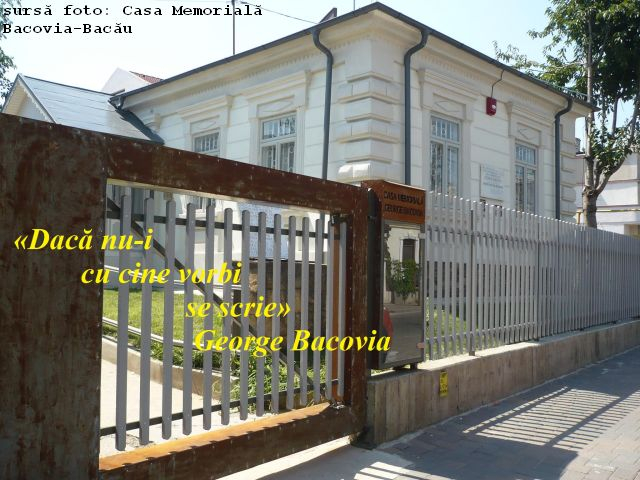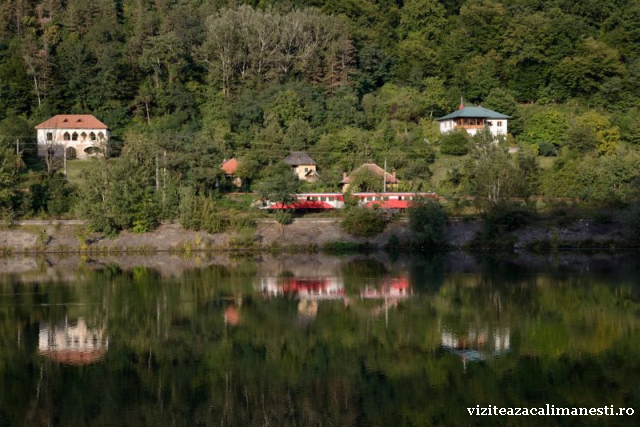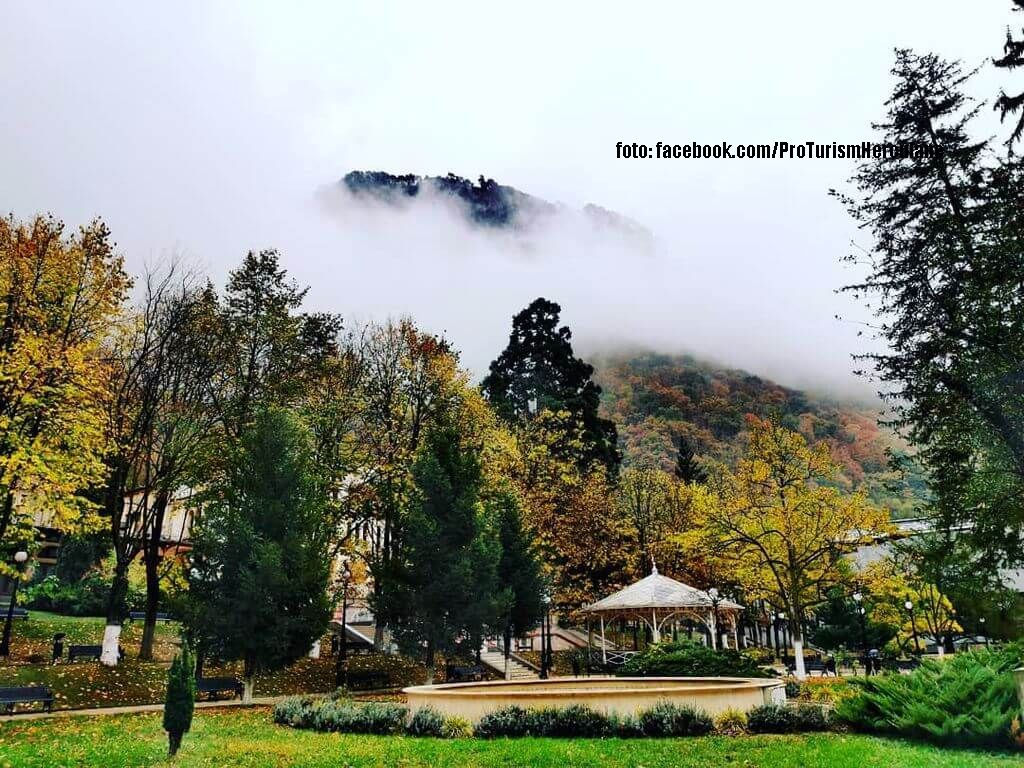Tourist Attractions in Bacau County
Although known mainly because of the Slănic Moldova spa resort, Bacău county has many tourist attractions

Daniel Onea, 22.11.2023, 01:55
Although known mainly because of the Slănic Moldova spa resort, Bacău county has many tourist attractions and lends itself to almost all forms of tourism. We will get to know the most interesting sights in the area, starting from the city of Bacău towards the mountain area of the county.
The municipality of Bacău, the seat of the county of the same name, was documented for the first time 615 years ago, in the year 1408. Over time, the city was inhabited by various ethnic groups, and the various cultural influences were reflected in the architecture and local traditions. However, a significant development of the settlement was recorded only in the 19th century, with the appearance of industry in the area, especially textile and wood. In general, Bacău has a diversified cultural life, with numerous cultural institutions, from theaters, museums, libraries, to art galleries. Bacău Jazz Festival, Bacău Fest, Bacău Music & Film Festival, and Bacău Street Art Festival are just some of the most anticipated annual events of the city. Romulus Dan Busnea, expert inspector at the County Public Service for the promotion of tourism, says that, although it is not so well known, the whole area can be the ideal vacation destination for all tourists.
“Bacău County has, indeed, a growing potential for the development of rural, agritourism, spa, leisure tourism, pretty much everything that means forms of Romanian tourism. There are a number of important objectives in Bacău county, starting with the municipality of Bacău which has a series of art and ethnography museum complexes. There are also two memorial houses. One is that of the poet George Bacovia, and the other is of the painter Nicu Enea. They were reintroduced into the tourist circuit after a series of renovations. We have the Astronomical Observatory too, which has an exceptional endowment, unique in the country.”
At the Bacău History Museum you can admire archaeological objects, historical documents and traditional costumes, while the Art Museum exhibits a valuable collection of paintings and sculptures. Next to icons made in the 18th – 19th centuries stand masterpieces of Romanian painting, made by Grigorescu, Petrașcu, Tonitza, or Pallady. Another objective could be the Radu Beligan Summer Theater, one of the oldest summer theaters in Romania. Romulus Dan Busnea, our guide today, invites us to get to know the other attractions of the county.
“If we head towards the Trotuș Valley area, which was very nicely compared to the Loire Valley, coming from Bacău, we can visit the George Enescu Museum, the Tescani branch, which is located in a mansion. Going down Trotuș Valley, we reach the town of Comănești, where you can visit Ghica Palace. In Dofteana commune, there is Ghica Castle. Between them there is the town of Dărmăneşti, where the Nemira Nature Reserve and the Poiana Uzului dam and reservoir are located. Dărmănești was even awarded the prize of the Destination of the Year contest, given that Dărmănești also hosts a large international jazz, blues, and rock festival every year, right at the foot of the Nemira Mountains, at the Uzu stadium.”
Near the town of Dărmanesti, there is the Târgu Ocna resort. It is known for its salty mineral waters, which have therapeutic properties. Here is also the Vasile Pârvan museum, dedicated to archeology and local history, with collections of archaeological and ethnographic objects that illustrate the evolution of culture and civilization in the Târgu Ocna area and its surroundings. Romulus Dan Busnea, expert inspector at the County Public Service for the promotion of tourism, also recommends a visit to the third largest salt mine and one of the oldest in Romania. “We can visit historical monuments such as the monastery and the Heroes Monument on Măgura Hill, but also the well-known salt pan, the Târgu Ocna salt mine. It is full of visitors because it has something to offer in terms of recreation and therapy. On the surface, next to the salt mine, a saltwater beach is also open until September. This leisure base includes several spaces for children, sports games for adults, theater hall, cinema hall, a museum. Therefore, tourists can spend several hours in the salt pan. Treatment sessions can be arranged. Tourists stay in hotels in Târgu Ocna, but also in the Slănic Moldova resort, known as the Pearl of Moldova. Thus, those from Slănic Moldova can also come to benefit from the treatment at the salt pan.”
The mineral waters of the 20 springs in Slănic Moldova come from underground water layers, without toxic substances and without pollution. Their quality has been recognized by specialists, and constantly monitored. In the center of the resort you will also see the casino building, built in 1894, a heritage monument of great historical value. The Tișița Gorges nature reserve should not be missed either, as a protected area known for its spectacular landscapes and hiking trails.
“Also, in Slănic Moldova, a diverse range of diseases are treated: digestive, respiratory, nutritional, or metabolic. Mineral springs are the wealth of the Slănic Moldova resort. They have been recognized and awarded medals over time. We also have treatment and leisure facilities here, we have the Nemira ski slope, we have a special farm located at an altitude of 900m, next to which there is also an interesting monastery. The place where it is located is extraordinary. On the other hand, at the farm, one of the few events of this kind in the Moldova area is organized annually, an ancient shepherd ritual. Its almost a unique area. Within a few kilometers, traditional festivals with winter customs are held, one of the biggest being the one in Bacău, and the other one that also attracted foreign tourists is the one in Comănești. The festivals are held in Bacău, Moinești, Comănești, Târgu Ocna and Slănic Moldova. It is a gathering of all the ensembles of the area with traditional dances and games, starting with the bear dance, the goat dance, etc. It is an explosion of color and sound, a very interesting event, which takes place during the festive days around Christmas, up to, and including New Years Eve. In addition to the locals, there are also tourists who come specifically to the area to film, and even participate in, these exceptional events.”
You will find many traditional guesthouses in Bacău County. And almost all of them promote authentic Romanian gastronomy: Moldavian stuffed cabbage, the traditional bulz, which is a cheese and polenta preparation, or the delicious dumplings with cheese. To explore all the tourist attractions, you can contact the national tourist promotion and information centers. Also, the guesthouse owners can be your local guides, their hospitality being well-known.






























